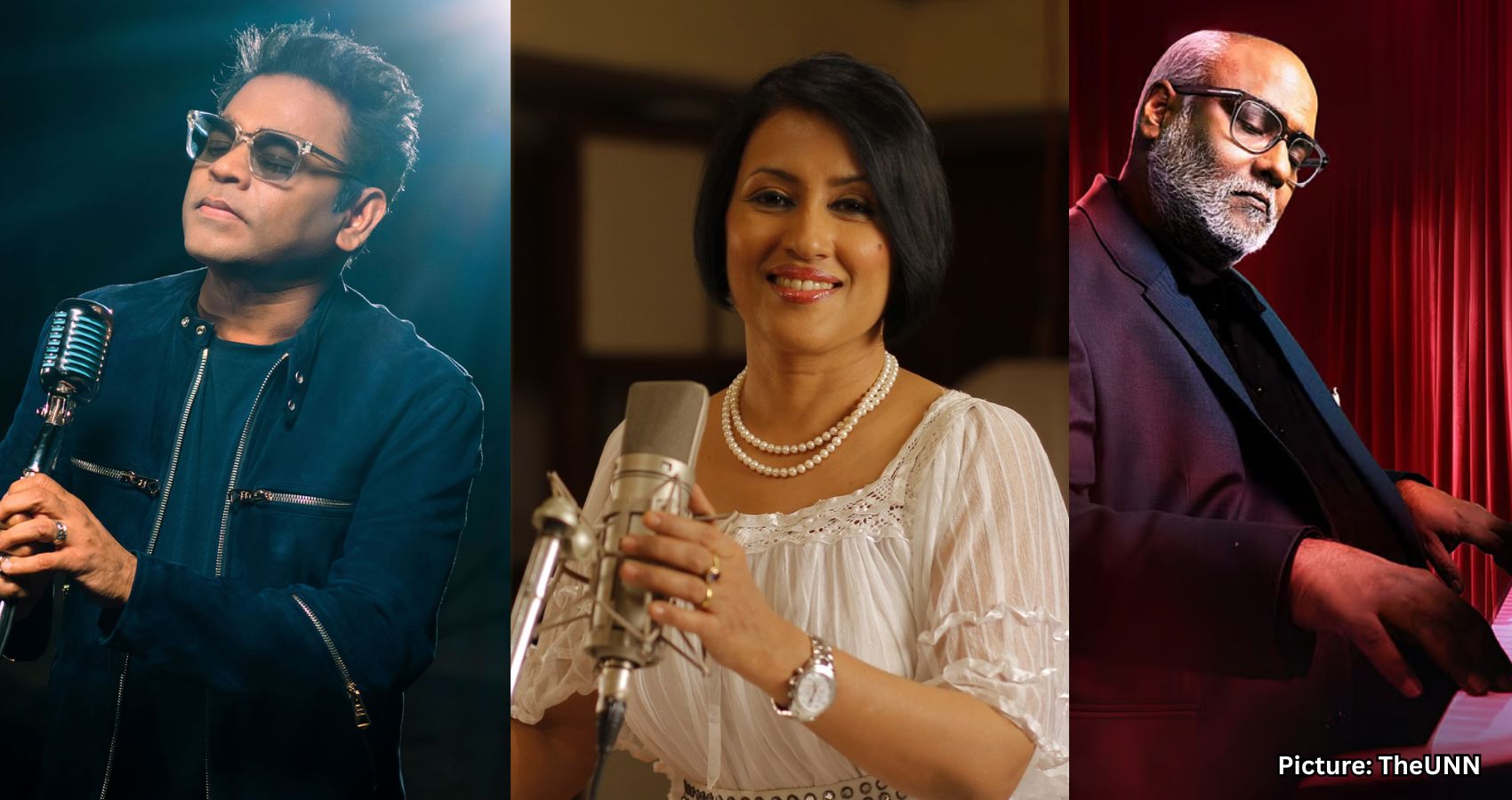Playback singer Madhushree recently shared her experiences collaborating with some of India’s most celebrated music composers, shedding light on the contrasting work styles of the South Indian and Bollywood music industries. With a career that spans both regions, she offered insights into the methods and professionalism of renowned composers like A.R. Rahman, M.M. Keeravani, Yuvan Shankar Raja, and Harris Jayaraj.
Speaking to O2India, Madhushree opened up about her memorable association with Oscar-winning composer A.R. Rahman. She fondly remembered her experience singing some of his most loved compositions. Among her collaborations with Rahman are the popular songs Kabhi Neem Neem and Marudhani, both of which became hits. She emphasized how Rahman’s approach to music consistently brings unexpected elements that elevate the final output.
“Rahman ji always brings an element of surprise… whether it’s this song or Kabhi Neem Neem, he adds his touch later, and it turns out to be magical,” Madhushree remarked. This observation highlights Rahman’s creative spontaneity and his tendency to keep the musical arrangement fluid, allowing room for artistic evolution even after the vocal recording is done.
She elaborated that working with Rahman often feels like being part of a larger creative process where his unique inputs can transform a simple composition into something truly enchanting. This element of unpredictability, she suggested, is part of what makes Rahman’s music so impactful and emotionally resonant with audiences across the globe.
Moving on to her experience in the South Indian music industry, Madhushree spoke highly of composers like Yuvan Shankar Raja and Harris Jayaraj. She noted that working with them feels seamless due to their clear direction and meticulous guidance throughout the recording process. According to her, these composers make the experience smooth and efficient by ensuring the singer is never left guessing.
“One thing about South Indian music composers is that they’re so good, you never feel lost. They’ll guide you with exact notations—where to pause, what expressions to use—they spell everything out, so you don’t have to figure it out on your own. They are that good,” she explained.
Her appreciation for this hands-on and structured method reveals the deep respect she has for the musical rigor and discipline in South Indian studios. The clarity provided by these composers, she added, not only eases the singer’s task but also ensures that the final product reflects a unified artistic vision.
Among the South Indian composers she praised, M.M. Keeravani holds a special place. Known for his extensive work in Telugu and Hindi cinema, Keeravani has won accolades both in India and internationally. Madhushree expressed admiration for his clear communication and understanding of vocal dynamics, which make recording sessions efficient and fulfilling for singers.
“When you go to sing for M.M. Keeravani, you don’t have to do anything—just follow whatever he says. All of them understand singers really well,” she said. This comment underlines Keeravani’s precise approach to music-making, where the singer’s role becomes a matter of following direction rather than improvising on the spot.
Madhushree’s praise for Keeravani, like her comments on Yuvan Shankar Raja and Harris Jayaraj, highlights a consistent theme in her narrative—the value she places on clarity, structure, and mutual understanding in the studio. She indicated that such working environments not only enhance the singer’s performance but also foster a professional and artistically satisfying collaboration.
One of the most striking points Madhushree made was about the broader cultural and professional differences between Bollywood and South Indian music industries. She noted that South Indian studios maintain a level of discipline that stands out, particularly in terms of punctuality and time management. In her experience, recording sessions in the South start precisely as scheduled, reflecting a commitment to time and professionalism that she finds admirable.
Madhushree emphasized this difference as a key distinguishing factor between the two industries, implying that the South Indian work culture leaves a strong impression on those accustomed to Bollywood’s often more relaxed approach to scheduling. While she didn’t criticize Bollywood directly, her remarks pointed to the efficiency and respect for time that define the Southern industry’s way of functioning.
This insight not only offers a behind-the-scenes glimpse into how different musical cultures operate within India but also serves as a testament to Madhushree’s versatility and adaptability as a singer who can navigate both systems. Her ability to adjust to varying styles of collaboration, whether it involves Rahman’s creative spontaneity or Keeravani’s structured direction, demonstrates the professional breadth that she brings to her craft.
Throughout her career, Madhushree has lent her voice to songs in multiple languages and genres, which has given her a broad perspective on India’s diverse music traditions. Her reflections serve as valuable commentary for aspiring singers and industry observers who wish to understand what it’s like to work with some of the country’s most influential music directors.
By sharing her personal experiences, Madhushree has not only paid tribute to the genius of the composers she has worked with but also offered an honest comparison of industry cultures. Her words highlight the importance of communication, clarity, and professionalism—qualities that ultimately enhance the collaborative process between singer and composer.
To sum up, Madhushree’s journey through both Bollywood and the South Indian music landscape has been shaped by her interactions with visionary composers. Her collaborations with A.R. Rahman showcased the magic of unpredictability and post-recording brilliance, while her work with Yuvan Shankar Raja, Harris Jayaraj, and M.M. Keeravani emphasized the value of clear guidance and discipline.
Whether through the whimsical genius of Rahman or the precise direction of Keeravani, Madhushree has experienced a spectrum of musical creativity that has enriched her as an artist. As she continues to evolve in her career, her insights provide a meaningful look at what it takes to thrive across India’s multifaceted musical terrains.

